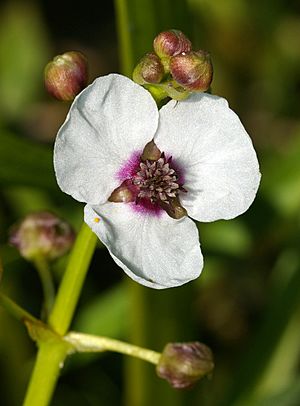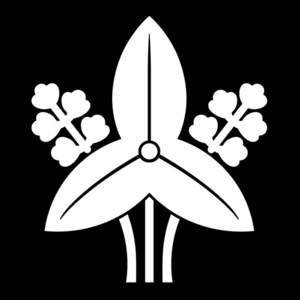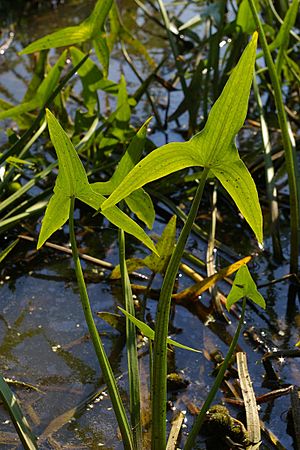Arrowhead (plant) facts for kids
Quick facts for kids Arrowhead |
|
|---|---|
 |
|
| Scientific classification | |
| Genus: |
Sagittaria
|
| Species: |
sagittifolia
|
| Synonyms | |
|
|
The arrowhead plant (also known as Sagittaria sagittifolia) is a cool flowering plant. It gets its name because its leaves look like arrowheads! This plant loves wet places. You can find it growing in wetlands across most of Europe, like Ireland and Portugal. It also grows in Russia, Japan, China, and even Australia.
People grow arrowhead plants in some countries because they can be eaten. In Britain, it's the only type of Sagittaria plant that grows naturally.
Contents
What is the Arrowhead Plant?
The arrowhead plant is a herbaceous perennial plant. This means it's a plant that doesn't have a woody stem and lives for more than two years. It grows in water that is about 10 to 50 centimeters (4 to 20 inches) deep.
What Does it Look Like?
The leaves that stick out of the water are shaped like arrowheads. These leaves can be 15 to 25 centimeters (6 to 10 inches) long. They can also be 10 to 22 centimeters (4 to 9 inches) wide. A long stem holds the leaf up to 45 centimeters (18 inches) above the water.
The plant also has long, thin leaves that stay underwater. These can be up to 80 centimeters (31 inches) long. The flowers are small, about 2 to 2.5 centimeters (1 inch) wide. They have three small green parts called sepals. They also have three pretty white petals and many purple parts called stamens.
How People Use Arrowhead
People have used the arrowhead plant for a very long time. Its round, underground parts, called tubers, can be eaten.
Arrowhead as Food
The tubers of the arrowhead plant are edible. They taste a bit plain, like a potato, but they are a bit crunchier. Even after they are cooked, they keep some crunch.
- In Japan, the tuber is called Kuwai. People often eat it during New Year celebrations.
- In China, it's known as cí gū. It's a common ingredient in winter hot pots.
- In Vietnam, people use the young leaves and roots for soups.
Scientists have found parts of Sagittaria sagittifolia at an ancient site in Poland. This shows that people were eating this plant thousands of years ago!
Arrowhead in Medicine
The arrowhead plant is also used in traditional Chinese medicine. Scientists have studied the plant to find out what special compounds it contains. Some of these compounds have shown activity against certain types of bacteria. For example, some compounds from the plant can help fight bacteria like Streptococcus mutans. This type of bacteria is often found in the mouth.
Is Arrowhead a Weed?
Sometimes, the arrowhead plant can grow too much. This can make it a weed or an invasive species. The USDA lists it as a plant that can be weedy. It also appears on lists of harmful weeds in many states. This means it can sometimes take over areas where other plants are trying to grow.
See also
- Broadleaf arrowhead, a plant found in shallow wetlands, traditionally used by the indigenous peoples of the Americas.
 In Spanish: Sagittaria sagittifolia para niños
In Spanish: Sagittaria sagittifolia para niños
Images for kids




